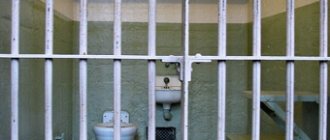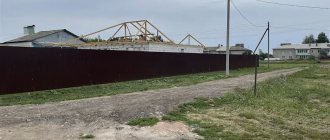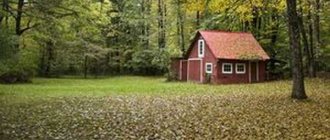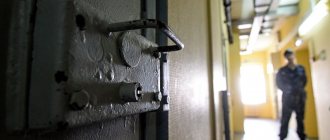What is common property in MKD
When a person buys an apartment in a multi-apartment building, he acquires not only the housing itself, but also part of the common property belonging to all residents.
This property includes:
- premises that are not parts of apartments and are intended to serve more than one residential or non-residential premises in a given building. These are inter-apartment landings, stairs, elevators, elevator and other shafts, corridors, strollers, technical floors, attics, basements with utilities, garbage chutes and garbage receptacles;
- roofs;
- enclosing load-bearing structures of the house. These are foundations, load-bearing walls, floor slabs, balcony and other slabs, load-bearing columns;
- enclosing non-load-bearing structures of a house serving more than one room. These are windows and doors of common areas, railings, parapets;
- mechanical, electrical, sanitary and other equipment (including to ensure unhindered access for people with disabilities) that serves more than one room;
- automated information and measurement systems for accounting for the consumption of utility resources and services, if they are installed at the expense of the owners of premises in the apartment building;
- the land plot on which the house is located, with elements of landscaping and landscaping, as well as other facilities located on this plot for the maintenance, operation and improvement of the house (transformer substations, heating points serving one house, collective parking lots, garages, children's and sports grounds in boundaries of the land plot). A land plot is included in the common property if its boundaries and size are determined in accordance with the requirements of land and town planning legislation;
- other premises in the house that do not belong to individual owners and are intended to meet the social and everyday needs of residents. These are premises intended for organizing leisure time, cultural development, children's creativity, physical education and sports, etc.
Common property in an apartment building belongs to the owners on the right of common shared ownership. The share is proportional to the size of the total area of the apartment.
Violation of the rules of residence
It is important to know and follow the rules of living in a communal apartment so as not to get into trouble. Each neighbor has the same rights and responsibilities, and accordingly, they can demand their protection. When conflicts are not resolved peacefully, law enforcement agencies and then the courts come to the rescue.
Judicial practice highlights separately cases concerning legal violations for residents of communal apartments in relation to common areas. However, before filing a claim, it is important to document the facts of violations. We need copies of statements to the district police officer, law enforcement agencies, their responses, drawn up acts, protocols, testimonies of residents of neighboring apartments, photos and videos, etc. As for the last points, this is very important in case of clutter or if a smoking citizen allows himself to smoke in public places and conversations with him do not bring results.
Unacceptable behavior of residents is recorded by the district police officer. However, law enforcement should also be called when neighbors continue to smoke in the bathrooms, kitchen or hallway. It doesn’t matter what kind of violation it is, it is necessary to record it in order to resolve the issue, and not limit ourselves to meaningless scandals.
Who should take care of common property?
Common property in an apartment building must be maintained in proper form:
- staircase landings must be clean;
- the equipment must work properly;
- The lights should be on and the motion sensors should be activated.
The property is in good condition, if it complies with sanitary and technical standards, it can be safely and comfortably used for its intended purpose.
Requirements for the condition of common property
- The property must meet the characteristics of reliability and safety
- Common property should not pose a threat to the life and health of citizens
- The person responsible for the condition of the common property must ensure access to residential and non-residential premises, common areas, as well as to the land plot (including for disabled people and other groups of the population with limited mobility)
- When using common property, the rights and legitimate interests of the owners of the premises must not be violated
- The person responsible for the condition of the common property must ensure the constant readiness of utilities, metering devices and other equipment included in the common property to provide utilities to residents of the apartment building
- In the case of construction or reconstruction of an apartment building, the architectural appearance of the building must comply with the design documentation
- The common property of apartment buildings must comply with the requirements of legislation on energy saving and increasing energy efficiency
Usually, to maintain the property in proper condition, residents create a homeowners' association (HOA) or enter into an agreement with a management organization (MA).
Also, owners with direct management can independently enter into agreements with specialized organizations. In addition, the developer has the right to maintain the property in proper condition if he did not transfer part of the premises to other persons after receiving permission to put the apartment building into operation, or the person who accepted the premises from the developer under the transfer deed.
Terms of use
Neighbors living in the apartment have the same rights to use the common area. None of them can limit access to these premises or completely block use. The parties can not only use the premises, but also place their furniture, equipment and other items there, taking into account that this will not infringe on the interests of other residents. Littering the common area is prohibited.
It is also impossible to sell premises that are in common use. Even if we are talking about a privatized room or rooms, the owner has the rights to sell them, but along with them he sells his right to use common property, which, as mentioned earlier, cannot be allocated in kind. If any conflicts arise, they can be resolved through the courts.
As for carrying out repairs, this responsibility rests with all neighbors who own the communal apartment. In this case, it is necessary to draw up an estimate of the work, since the costs are not divided equally between the parties, but in proportion to the shares that the residents have in the apartment. If you refuse to pay your part, you can recover it, again, through the court.
We should not forget about maintaining silence at the times established by the region. Typically, making noise is prohibited from 23:00 to 07:00. Time varies in different localities by plus or minus an hour on weekdays.
What is included in the maintenance of common property*:
- inspection of common property to timely identify non-compliance of property with the requirements of the legislation of the Russian Federation, as well as threats to the safety of life and health of citizens;
- ensuring the readiness of in-house engineering power supply systems and electrical equipment to provide public electricity supply services;
- maintaining temperature and humidity in common property areas;
- cleaning of common areas and land plots as part of common property;
- collection and removal of liquid household waste, including waste from organizations and individual entrepreneurs using non-residential premises in apartment buildings;
- organization of places for accumulation and accumulation of used mercury-containing lamps, their transfer to specialized organizations that, under a license, work with waste of I-IV hazard classes;
- maintenance of municipal solid waste accumulation sites**;
- ensuring fire safety measures;
- maintenance of land plots with elements of landscaping and improvement;
- carrying out routine repairs, preparing for seasonal operation and maintaining common property, as well as landscaping elements on a land plot as part of common property;
- carrying out mandatory measures to save energy and improve energy efficiency;
- ensuring the installation and commissioning of common house metering devices for cold and hot water, thermal and electrical energy, natural gas, as well as their maintenance and verification of metering devices;
- purchase of cold and hot water, electrical energy for general house needs (GDN), as well as wastewater disposal.
* Depending on the composition, design features, degree of physical wear and technical condition of the common property, as well as depending on the geodetic and climatic conditions of the location of the apartment building.
** Does not include cleaning of municipal solid waste loading areas.
All owners of premises in an apartment building bear the burden of expenses for maintaining common property. The share of mandatory expenses for maintaining common property is also determined by the share in the right of common ownership of common property: the larger the area of the apartment, the higher the maintenance fee.
Responsibility for the safety of common property lies primarily with the property owners themselves, as well as the management organization they hired or the created HOA and local government bodies.
Communal payments
Payment for utilities is also borne by residents in proportion to their shares in the apartment. For example, if accounting devices (meters) are not installed in the premises, the parties must decide among themselves on what principle they will divide the payment - according to the occupied area or the number of residents. Each case has its own nuances and not everyone is comfortable and correct what is for others.
In the case where there are metering devices, the rules do not need to be changed. It is unlikely that anyone will use a meter to track exactly how much resource they spent and calculate the total amount at the end, although this option is not excluded.
When neighbors cannot reach a solution peacefully and go to court, the decision will be as follows: gas, heating and water are divided by the number of people living, and electricity is calculated according to the installed appliances in the rooms.
Russian legislation does not regulate obligations regarding the division of payment for utilities in a communal apartment, but there are penalties for non-payers. Personal accounts can be divided so that each resident owner is responsible for their own payments, but in practice not everyone does this. Accordingly, if one neighbor does not pay and the bills are not divided, everyone will be held responsible, even those who pay their share.
How can you use common property?
By decision of the general meeting of owners (GMS), property in an apartment building can be transferred for use to other persons if this does not violate the rights and legitimate interests of citizens and legal entities. For example, you can rent out the premises to a store, a consumer services company, or a children's development center. In this case, all owners in the apartment building will be the lessors.
The owner of premises in an apartment building does not have the right to:
- to allocate in kind your share in the right of common ownership of common property in an apartment building;
- sell or lease your share in the right of common ownership of common property in an apartment building, as well as perform other actions entailing the transfer of this share separately from the right of ownership of the apartment;
- carry out work and perform other actions that cause damage or spoil public property;
- rearrange or change the layout of common areas without the consent of all residents and the availability of documents that permit this. For example, without a decision from the OSS, you cannot install an additional door in a common corridor, especially if it impedes access to firefighting equipment.
Cleaning MOP in an apartment building
Cleaning the common areas of apartment buildings is a prerequisite for the proper maintenance of common property. Employees are required to comply with the frequency and norms adopted at the legislative level.
Norms
The services of a company servicing common property include:
- ventilation of staircases on all floors;
- maintaining building structures and utility networks in good condition;
- ensuring compliance with sanitary standards at the entrance.
Maintenance of waste chutes includes the provision of the following services:
- inspection of the mine and removal of waste from waste receptacles;
- cleaning bins from loading valves;
- periodic cleaning and disinfection of the waste chute;
- timely elimination of malfunctions and minor blockages.
If damage is detected, the home's technical staff is not required to repair it themselves. It is necessary to transfer the information to the management company, whose employees are obliged to solve the problem.
The frequency of cleaning of entrances is established at the legislative level:
- The floors in the corridors, elevators and near garbage chutes must be swept daily with a wet broom.
- The area in front of the waste receptacle is cleaned daily.
- Cleaning at the entrance to the entrance is carried out at least once a week.
- Wet cleaning with a wet rag in the elevator room and entrance is carried out at least 2 times a month.
- The radiators and railings are wiped twice a year.
- Entrance windows, entrance doors and electrical panels are washed once a year.
Based on the above rules, a schedule for cleaning MOP in an apartment building is drawn up.
Payment for cleaning MOP
What is MOP cleaning on the receipt? This is a payment by residents for cleaning the entrance, which is made monthly according to the indicator in the housing and communal services receipt.
The cost of this service consists of 3 main components:
- MOP staff salaries;
- frequency and time spent on cleaning;
- staff compliance with schedule conditions;
- purchasing cleaning tools and detergents.
According to the law, MOP personnel cannot receive a salary for cleaning common areas lower than the established minimum wage. Wages are set once a year.
What to do if MOP cleaning is carried out poorly?
Poor quality of cleaning in apartment building entrances is a common problem . Debris often accumulates in common areas, cobwebs and dust form. If such a problem is identified, you should not remain silent and endure: dirt in the entrance is not only unaesthetic, but also unsafe for health.
Contact the management organization that services your apartment building. Management company employees are obliged to take measures, since housing and communal services payments include the cost of cleaning the entrances.
Make a written complaint and send it to the HOA or management company . This document does not have a strictly defined form, but it should reflect the main points, such as:
- description of the problem;
- links to legislative acts and the agreement with the management company;
- requirements for taking action.
The claim is drawn up in 2 copies: one is sent to the management company, and the second (with a note of acceptance) remains with the residents.
After receiving the complaint, the management company is obliged to send a commission that will assess the quality of the cleaning services provided. If the management company fails to act, residents have the right to send their complaint to the prosecutor's office, district or city administration, or Rospotrebnadzor. The maximum period for consideration of a claim is 30 days.
So, MOPs are common areas to which all residents of an apartment building have access . Residents are required to pay for the maintenance of such places, which is reflected in housing and communal services receipts.
If you receive payments with large bills for cleaning or electricity consumption at the MOP, then you have the right to submit a claim to double-check the correctness of the calculations. Of course, you have to pay, but you shouldn’t overpay.
Contents order
The owners of the premises have the right to establish the regime for the use of the common property of the building, as well as the adjacent territory, at a meeting. You should act in accordance with the Housing Code of the Russian Federation (Article 44–) and the Civil Code of the Russian Federation (Chapter 9.1).
The meeting of co-owners can be held in person, in absentia or in a mixed form and must be recorded. At least half of all participants must be present, and the decision is made by a simple majority of votes.
The list of activities for maintaining the adjacent territory must comply with municipal landscaping rules. They indicate the rules and procedure for the participation in such events of persons authorized to be responsible for the operation of the building (GrK RF, art. 55.25, part 9).
What is public land?
Public areas are, first of all:
- boulevards and embankments;
- city gardens, parks;
- streets, squares and passages;
- roads;
- forest parks and urban forests;
- beaches and water features.
Each category of public areas has its own characteristics of use by citizens.
Owner's responsibilities
Civil legislation provides that the owner’s responsibilities for the maintenance of common property are financial in nature (Civil Code of the Russian Federation, Art. 249). However, by agreement among themselves, co-owners can also provide for a different format of participation - for example, cleaning the territory, participating in cleanup days.
- MOP must be maintained properly, that is, in compliance with SanPiNs, GOSTs, in a safe condition.
- Stairs, elevators, corridors must allow free use of the building and its parts.
- Engineering communications and metering devices must be in a state of readiness and operability.
- The external appearance of the building is consistent with the architectural design.
The rules for maintaining common property in an apartment building are determined by the Government of the Russian Federation (Resolution No. 491 of August 13, 2006).
Land issues between neighbors
The land topic is very relevant for land owners. Disputes often arise between neighbors on this issue, for example, if they have different ideas about the use of a common road or access to a site. In some cases, the court allows one of the citizens to exercise control over the highway, which is also used by the owners of neighboring plots. At the same time, this citizen should not interfere with traffic.
If one of the neighbors tries to seize and illegally move the boundaries of their own plot, then in this case the dispute is resolved by demarcating the general purpose territory.
Should the owner transfer funds for one-room parking and an elevator?
The obligation to participate financially in the maintenance of property belonging to all owners of premises in the building is unconditional and does not depend on what kind of premises is owned - an apartment or an office. It also does not depend on whether such property is actually used.
Owners of beauty salons on the ground floors must pay for the maintenance of the elevator and roof, and apartment owners must pay for the maintenance of corridors on the ground floors intended for office space. In 2021, this position was supported by the Supreme Court of the Russian Federation (Plenum Resolution No. 22 of June 27, 2021).








